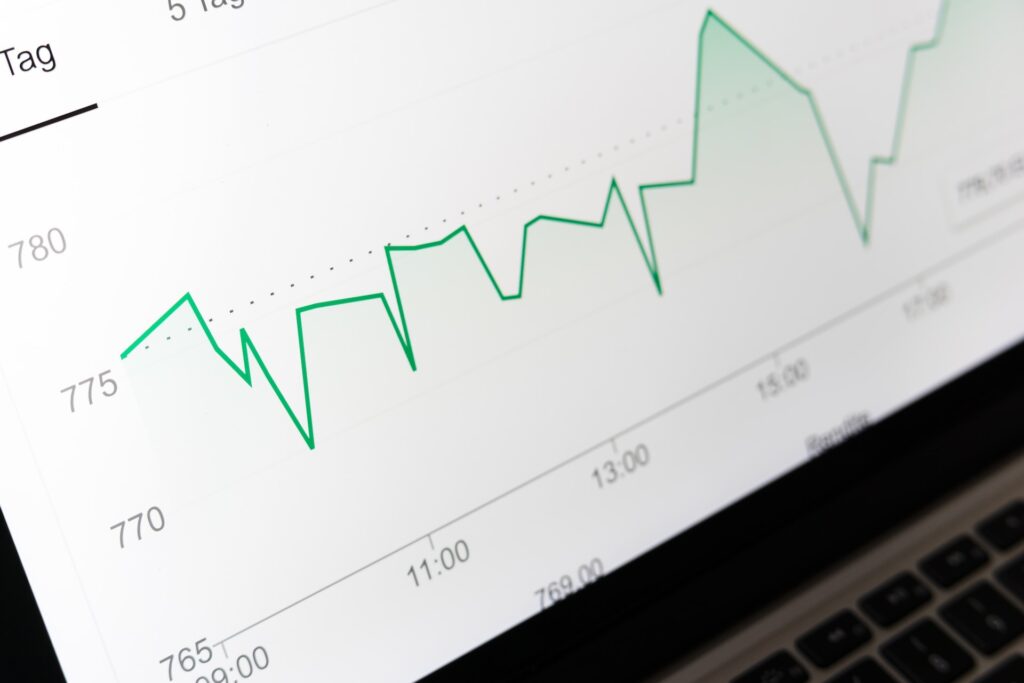Designing a revolutionary product that captivates the market is only half of the battle. To be truly successful, you need to sell it at the perfect price: high enough to turn a generous profit but low enough to make it attractive to potential customers. The problem is, how do you find that ideal pricing range?
To help you get your pricing strategy right, below, we’ll discuss the concept of price benchmarking.
From understanding its importance to exploring various approaches, you’ll gain valuable insights that will allow you to get ahead of the competition and maximize your profits.
Read on and discover everything you need to know about price benchmarking!
Key Takeaways
- Price benchmarking is a strategic method for comparing your product or service prices with competitors, helping you find the ideal pricing range.
- Utilizing price benchmarking can be beneficial in various situations, such as evaluating promotional campaigns, launching new products or services, entering new markets, and shifting your business operations to a new model.
- Although price benchmarking may seem complicated, tools like Brandly360 can simplify the process by efficiently gathering and analyzing competitor pricing data.
- A successful price benchmarking process involves three main steps: planning, analyzing, and implementing.
- To optimize your price benchmarking efforts, maintain consistency in data collection methods, consider both direct and indirect competition, regularly update the pricing information, and be prepared to adjust your pricing strategy based on new insights.
- Avoid common price benchmarking mistakes such as overemphasis on competitor prices, ignoring regional differences, relying on outdated or inaccurate data, overlooking promotions or discounts, and failing to act on benchmarking insights.

source: https://unsplash.com/photos/IrRbSND5EUc
What Is Price Benchmarking?
Price benchmarking is a systematic and strategic method used by businesses to compare their product or service prices with those offered by competitors in the niche.
This approach involves gathering data on competitor pricing, analyzing the information, and making necessary adjustments to ensure your pricing structure is both attractive and profitable.
The purpose of price benchmarking extends beyond simply staying competitive; it also aims to identify ways and opportunities for improvement, such as optimizing your cost structure or enhancing the value of your offerings.
A successful price benchmarking process requires a thorough understanding of the target market, key rivals, and competitive pricing trends.
Accurately comparing your prices with those of your rivals helps you gain valuable insights into areas where you may be undercharging or overcharging customers.
Ultimately, price benchmarking helps you make informed decisions regarding your pricing strategy, ensuring that you maximize profits and maintain a strong market position.
Want to get set up with competitor monitoring, price tracking and even more?
Book a free demo to monitor any e-commerce competitor pricing and get instant info of important price movements and more!
When and Why Should You Use Price Benchmarking?
Price benchmarking is invaluable at all stages of a business’s life cycle, from the very beginning to when you’re already an established player in your industry. However, there are certain moments where this approach shines even more than usual.
Evaluating Promotional Campaigns
Comparing your promotional pricing strategies with those of competitors can help measure the effectiveness of your sales campaigns. Consumers are increasingly savvy and well-informed; they frequently compare set prices across multiple vendors before choosing a purchase.
As such, it’s essential to keep track of how other companies in your niche are promoting their products and services, particularly during major holidays or other significant commerce events.
If you’re offering discounts but still losing customers to the competition, it may be time to adjust your pricing strategy.
Launching New Products and Services
Launching a new product or service is always a risky undertaking. This process requires careful planning and extensive market research to ensure the success of your new offering.
Price benchmarking is essential for accurate, competitive pricing of new products and services. After all, there’s only one way to know whether you’re charging the right amount: by comparing your prices with those of your competitors.
You need current price benchmarking to strike an ideal middle ground with your prices. Underpricing your new product could make customers think that it lacks quality while overpricing it could make you miss out on potential sales.
Entering New Markets
Expanding your business into new markets is another scenario where price benchmarking can help ensure the success of your venture.
Knowing the current industry prices for your target geographical area helps you develop a pricing strategy that’s in line with the competition and sets you up for success from the get-go.
Let’s imagine that your US-based business is trying to expand into Asia. You can’t simply apply your current US competitive pricing to this new market because the cost of living and purchasing power are significantly different than in America. You might need an effective introductory price strategy, and price benchmarking is key to that.
Price benchmarking helps you understand how much customers in your target location can afford to pay for your product or service, which is important in determining a profitable price point.
Shifting Your Business Model
If you’ve decided to shift your business operations to a different model – say, from a leasing model to a subscription-based one – price benchmarking is key to implementing this transition successfully.
After all, it’s unlikely that you are the first business ever to have this idea. Others have likely already been through this process and have established a sensible price range.
Comparing your new pricing strategy with the existing offers in the market helps you understand the impact of your changes on your bottom line. Adjusting your prices accordingly ensures that you remain competitive and maximize profits.

source: https://www.pexels.com/photo/focused-professional-man-using-laptop-7567529/
Is Price Benchmarking Complicated?
In theory, price benchmarking isn’t overly complicated – all you need to do is compare your prices with those of your rivals. However, it’s getting the relevant data that can be difficult.
Collecting the necessary information manually means scouring the internet, visiting your competitors’ sites, or making phone calls to get information on their prices.
This process is time-consuming and often fails to provide accurate data, as prices can change very frequently. The size of your market niche is also a factor – if you have thousands of rivals all over the globe, manually gathering information is practically impossible.

Fortunately, there are tools and services available that simplify the process significantly. One such solution is Brandly360.
Brandly360 is a comprehensive pricing intelligence tool designed to empower businesses by quickly and efficiently gathering and analyzing competitor pricing data. This innovative platform features an easy-to-use interface, advanced analytics capabilities, and customizable reporting options.
With Brandly360, businesses of all sizes can make well-informed pricing decisions based on accurate, up-to-date information.
Choose Brandly360 now and make your price benchmarking efforts simpler than ever!
Want to get set up with competitor monitoring, price tracking and even more?
Book a free demo to monitor any e-commerce competitor pricing and get instant info of important price movements and more!
How to Develop a Price Benchmarking Process?
Once you have your dedicated price intelligence tool chosen, developing a good price benchmarking process is relatively simple. Your strategy should involve 3 main steps: planning, analyzing, and implementing.
| Step | What does it do? |
| Planning phase | The planning phase serves to identify key elements necessary to conduct a proper price benchmarking process. |
| Analysis phase | The analysis phase aims to collect the relevant pricing data and research them for opportunities worthy of exploiting. |
| Implementation phase | The implementation phase involves making data-driven decisions and monitoring the impact of your changes. |
Planning
During the planning phase:
- Identify your key competitors: Research businesses that offer similar products or services within your industry to determine which companies pose the most significant threat to your market share.
- Define product categories: Consider establishing clear product categories to ensure a more precise comparison of prices.
- Select pricing data sources: Identify reliable sources of competitor pricing information, such as a popular marketplace, different business websites, third-party vendors, or industry reports.
- Establish objectives and metrics: Clearly outline the goals of your price benchmarking process and define measurable metrics to gauge progress and success.
Analyzing
In this stage:
- Gather pricing data: Collect pricing information from various sources using tools like Brandly360 to streamline the data collection process and make it more efficient.
- Compare prices: Analyze competitor prices by comparing them to your own and identifying trends or discrepancies that need attention.
- Evaluate price positioning: Assess your pricing strategy in relation to competitors and determine if adjustments are necessary to remain competitive.
- Identify opportunities for improvement: Look for areas where you can optimize costs, improve product offerings, or create new revenue streams based on your analysis.
Implementing
Once you have a clear understanding of the market landscape and identify areas for improvement, implement changes in your pricing strategy:
- Adjust prices accordingly: Reevaluate your pricing structure based on your benchmarking insights and adjust prices as needed to stay competitive.
- Offer promotions or discounts: Strategically introduce promotions or discounts to attract customers and drive sales while still maintaining profitability.
- Reposition products: Consider repositioning your products within the market by highlighting unique features or benefits that differentiate them from competitors’ offerings.
- Monitor results: Closely track the impact of the changes made to your competitive pricing strategy to ensure they deliver the desired outcomes and continually refine the process as needed.

source: https://unsplash.com/photos/dBI_My696Rk
Useful Price Benchmarking Tips
It’s essential to consider several key factors and practical examples to optimize your price benchmarking efforts. Ensure you consider them before you hit Enter and start your price benchmark process.
Try to maintain consistency in data collection methods to ensure accuracy and comparability throughout the entire process. For instance, if you’re using website scraping to gather competitor prices, continue with that method for each rival to minimize discrepancies in data.
Additionally, don’t limit your analysis to direct competitors, such as those offering identical products or services; include indirect competition as well, like businesses with a similar target customer base or those operating within a related industry niche. This approach will provide a more comprehensive understanding of the market landscape.
It’s also crucial to regularly update pricing information to reflect current market trends and dynamics accurately. For example, if there’s been a sudden surge in demand for home gym equipment due to global events, ensure your pricing data reflects this shift.
Keep in mind that prices aren’t the only aspect to consider when benchmarking; elements such as product features, quality, customer service, brand reputation, and other expenses are equally important in gaining a complete view of the competitive landscape.
For instance, if your product offers unique features or superior quality compared to rival offerings, this should be taken into account when analyzing prices.
Lastly, always be prepared to adjust your competitive pricing strategy based on new insights gathered from your benchmarking exercises.
If you find that your prices are consistently higher than those of your competitors without any clear differentiation in terms of quality or features, it might be time to reevaluate and adjust your pricing structure accordingly.
What Are the Common Price Benchmarking Mistakes to Avoid?
To help you perfect your pricing strategy as much as possible, below you’ll find some of the most frequent price benchmarking mistakes that you should avoid at all costs.
| DONT’s of price benchmarking | Why it matters? |
| Overemphasis on competitor prices | Don’t focus solely on competitor prices without considering other factors such as target audience or market positioning. |
| Ignoring regional differences | Avoid drawing incorrect conclusions by accounting for regional variations in pricing strategies and consumer preferences. |
| Relying on outdated or inaccurate data | Regularly update your pricing data to ensure accurate benchmarking insights. |
| Overlooking promotions or discounts | Factor in promotional pricing when comparing prices to maintain an accurate assessment of the competitive landscape. |
| Failing to act on benchmarking insights | Ensure that you implement changes based on your benchmarking analysis, as inaction can render the entire process fruitless. |
Final Thoughts
Price benchmarking is an indispensable tool for businesses looking to optimize their competitive pricing strategies and stay ahead of the competition.
Remember that collecting accurate data and maintaining consistency in your analysis are key to achieving success in this task.
By embracing the power of price benchmarking and leveraging valuable insights, you’ll be well-equipped to make informed decisions that drive profits and secure your company’s position in the market.
So, don’t hesitate to dive into the world of price benchmarking and unlock the full potential of your business today! And remember to check out Brandly360 – contact us today to learn more about automating your price intelligence and benchmarking efforts!
Want to get set up with competitor monitoring, price tracking and even more?
Book a free demo to monitor any e-commerce competitor pricing and get instant info of important price movements and more!

Manager with experience in leading team of software developers and testers during implementation of internal and external IT projects. Ceo of Brandly360.com.


